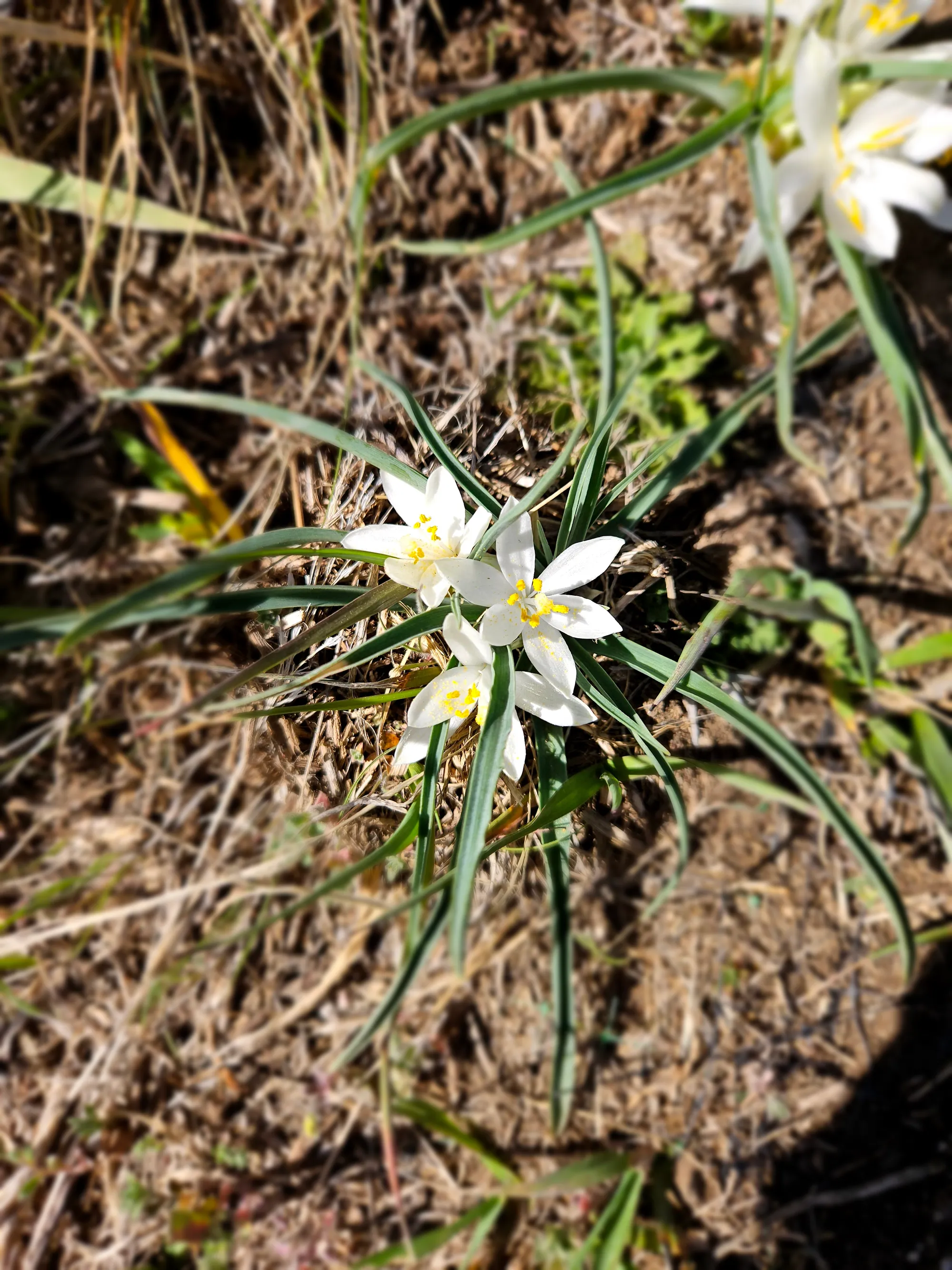by Tom Schweich
Leucocrinum montanum Nutt. ex A. Gray “Star Lily,” is a very common low-growing lily-like white flower blooming now along the trails around Golden. Common along the Front Range from northernmost New Mexico, through Colorado and Wyoming, it has a similar south to north distribution in Nevada and California, with a kind of donut hole where it isn’t found in western parts of Colorado, Utah and eastern Nevada. As it happens, the eastern and western populations have somewhat different genetics, in that plants from the Rocky Mountains have 14 chromosomes, whereas those from Nevada and California have 13 chromosomes.
Leucocrinum montanum literally translates to “Mountain White Lily.” Wildflower books have a variety of common names: “Californian Soap-Root,” “Rocky Mountain Dwarf White Lily,” “Common Starlily,” “Mountain Lily,” and sometimes “Sand Lily.” This last is a misnomer. L. montanum is not a plant of sandy sites. Instead, it grows in rocks, gravel, and rocky soil. Additionally, there are other “lilies” that are found only in sand, and the common name “sand lily” should be reserved for them.
Our plant was first recognized by Thomas Nuttall, an English botanist and zoologist, while crossing the continent on the Oregon Trail in 1834. Nuttall wrote that he saw it “on the high plains of the Platte River.” This would have been the North Platte River in either Nebraska or Wyoming.








